1 year of operations : Meet the CHEOPS science operations team
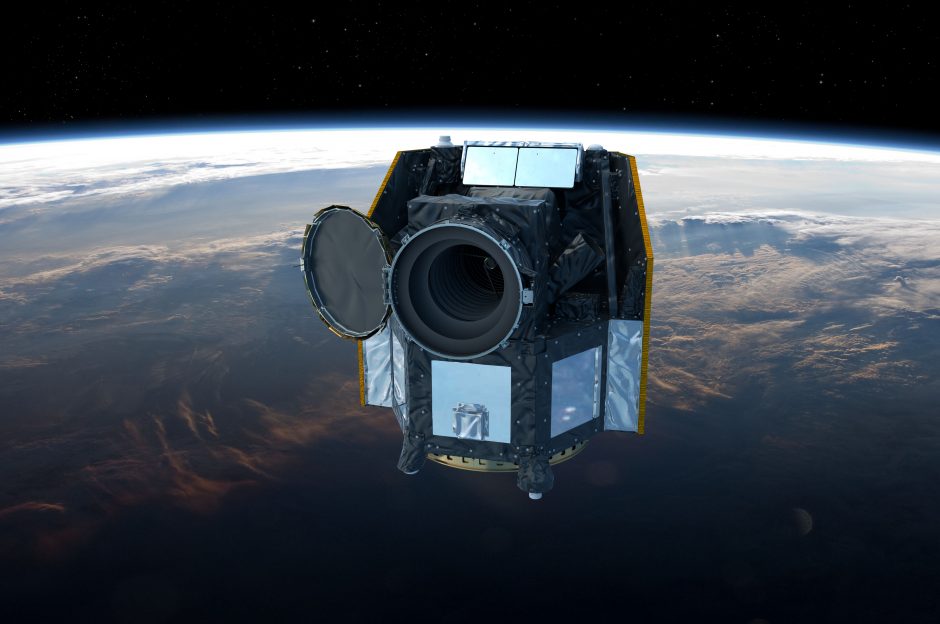
To ensure the smooth running of the CHEOPS mission once the satellite is in orbit, operations have been split in two parts : Science Operations in Switzerland with the Scientific Operations Centre (SOC) in Geneva and the Instrument Team in Bern, and the Mission Operations Centre (MOC) in Torrejón, Spain, which is in charge of communication with the satellite and spacecraft health. The overall lead of the mission rests with the mission manager in Bern.
While the SOC team must plan the observations and compute the spacecraft pointings, it must also receive the telemetry data, generate image files containing the flux of the observed star, and then extract a light curve from the images in a process known as data reduction. The data must then be archived and made available to the scientific community. Also the instrument has to be constantly monitored and the observations optimized. But who are the Science Operations team people working in Switzerland and what are their responsibilities?
The SOC team in Geneva
Mathias Beck, who is in charge of the team in Geneva, is responsible for problem solving, administrative tasks, such as planning technical activities, writing reports, funding and holidays. He has regular contact with ESA, for example when there is an alert for a possible collision with debris floating in space. The Space Debris Office issues an opinion and it is the consortium under the direction of Christopher Broeg, the mission manager, that takes the decision whether or not to move the satellite, as was the case in November, when it was necessary to change orbit, or in February, when it was considered that the danger was negligible. Mathias Beck, a physicist by formation, is well aware of all the constraints and problems associated with the use and maintenance of a scientific satellite.
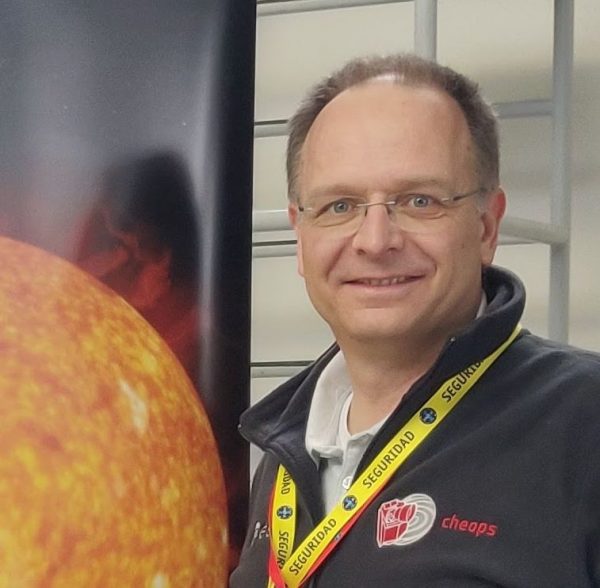
After working at CERN for 5 years to obtain a doctorate in experimental particle physics from the University of Heidelberg and a short excursion into industry, he was hired in 1999 for the INTEGRAL space mission and 2007 for the Gaia mission at the Department of Astronomy of the Unige, where he became the IT manager for 3 years. It is therefore quite natural that Didier Queloz and Willy Benz entrusted him with the responsibility of the SOC in Geneva and the coordination of development between the SOC and the MOC. The team for which he is responsible now consists of Nicolas Billot, Anja Bekkelien and David Fuytan in Geneva.
Nicolas Billot is the operation scientist, who designs the weekly schedule of observations. He has to deal with three sources of request: that of the astronomers who request observations, that of the scientific manager of the instrument (the CCD) who is responsible for monitoring the health of the device, and that of the MOC who manages communication with the satellite. Every Monday he collects the data from these three sources, optimises them and generates a sequence of activities that the satellite will carry out autonomously for the coming week. This schedule is optimised over the next 4 months and the cycle is repeated every week. The schedule files sometimes have to be modified on request, for example if scientists have asked to increase the size of the images taken on board to improve the quality of observations. This kind of modification can only be done by hand, but it’s the only way. “It’s quite stressful, and as long as you don’t make a mistake everything goes well. No one notices that it’s working as planned, but if there’s a problem then everyone sees it,” says Nicolas. “It never stops, this weekly cycle will be repeated for the duration of the mission. During holidays or sick leave, Mathias takes over. “He can do everything”, says Nicolas.
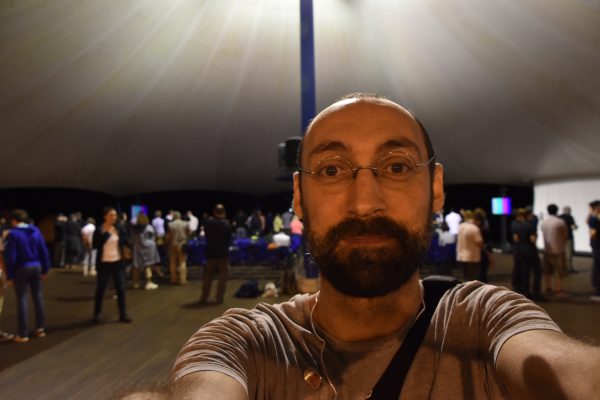 After obtaining a Master of Physics at the University of Edinburgh and a PhD in astrophysics on star formation and the interstellar medium at the University of Paris XI, Nicolas Billot worked as an instrument scientist on the Herschel mission at NASA and as a scheduler on the IRAM radio telescope in Sierra Nevada. He is therefore familiar with the requirements of space and the design of an observation schedule.
After obtaining a Master of Physics at the University of Edinburgh and a PhD in astrophysics on star formation and the interstellar medium at the University of Paris XI, Nicolas Billot worked as an instrument scientist on the Herschel mission at NASA and as a scheduler on the IRAM radio telescope in Sierra Nevada. He is therefore familiar with the requirements of space and the design of an observation schedule.
As with any scientific instrument there can be problems in the data processing: a bug, a wrongly taken image, a transmission error. Anja Bekkelien joined the team in 2014 to develop and test the data processing and archiving system at the SOC. Today, a large part of her time is spent on more operational tasks, such as data filtering, and following up on problems encountered in the processing and archiving of CHEOPS data.
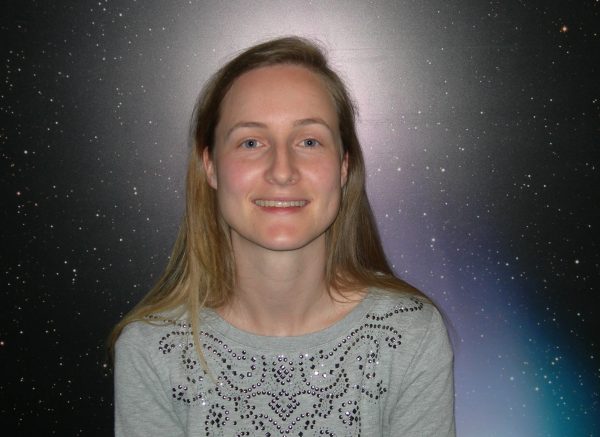
After arriving in Switzerland as a student to do an internship at CERN, Anja worked for a few years in the IT department there. Attracted by life in Geneva, she enrolled at the University of Geneva where she obtained a Masters degree.
Before sending CHEOPS into space, it was necessary to have an idea of how it would behave, and the best way was to build a simulator of the instrument’s behaviour. David Futyan was tasked with developing CHEOPSim to providedetailed simulations of data received from CHEOPS, used to test the data processing software, to understand the response of the detector, and to evaluate the photometric performance. Since the launch of the satellite, David has been working within the SOC team to ensure smooth data processing with a focus on identification and analysis of anomalies. He has also been involved in improving the observation scheduling algorithm to increase the fraction of time that the telescope is actively observing, and refining the definition of the CHEOPS magnitude to take into account differences between the expected and observed stellar flux.
 David has a PhD in experimental particle physics from the University of Manchester and spent 14 years at CERN, the majority of which was focused on the search for the Higgs boson. He has always been interested in astronomy and was very pleased to have the opportunity to participate in an astronomy mission, moving from studying the very small to the very large.
David has a PhD in experimental particle physics from the University of Manchester and spent 14 years at CERN, the majority of which was focused on the search for the Higgs boson. He has always been interested in astronomy and was very pleased to have the opportunity to participate in an astronomy mission, moving from studying the very small to the very large.
The Instrument team in Bern
In order to receive, reduce or analyse the data and then do science, it is imperative that the satellite functions normally and as intended.
Andrea Fortier is the instrument scientist, responsible for keeping the telescope’s responses within the specifications set at the outset. Based in Bern, she is the link between the scientists who have their requirements and the technicians who find solutions, “so I’m bilingual” she smiles. “I have to translate and understand what the astronomers mean to the technicians and vice versa”. She has to check the noise level, the CCD response, the PSF, etc. According to Andrea, the instrument works perfectly and even better than expected for bright stars (magnitudes between 6 and 9). She did have one stressful moment when the instrument was transmitting a signal while the door was still closed. The window in the door for testing may have been blocked with partially transparent equipment allowing light to shine on the detector where it should have been dark.
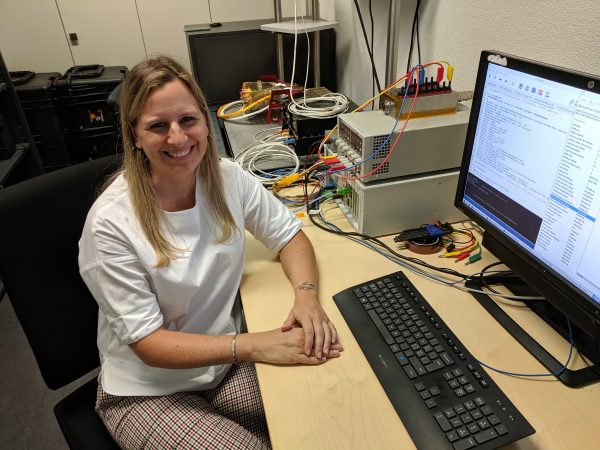 From Argentina, Andrea did her PhD thesis at the University of La Plata and then got a postdoc in Bern with Yann Allibert, whose field of research is the same as hers, i.e. the modelling of giant planets. When offered the opportunity to work on CHEOPS, Andrea accepted, seeing this change of direction as an opportunity to work on something more concrete while remaining in the field of exoplanets.
From Argentina, Andrea did her PhD thesis at the University of La Plata and then got a postdoc in Bern with Yann Allibert, whose field of research is the same as hers, i.e. the modelling of giant planets. When offered the opportunity to work on CHEOPS, Andrea accepted, seeing this change of direction as an opportunity to work on something more concrete while remaining in the field of exoplanets.
Attila Simon is an associate member of the CHEOPS scientific team. As software support engineer he develops code in python to analyse CHEOPS data which is used to monitor photometric accuracy. His role is to monitor the evolution of the number of bad pixels and the level of the CCD dark current which can be a source of photometric error. These measurements help to define the best location of the star on the CCD to have the lowest contribution to noise from these bad pixels. Attila also investigates the variation of the shape of the star’s point spread function over a long time scale.
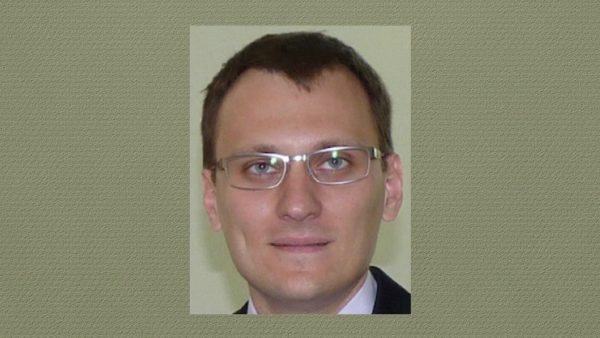 Attila obtained his PhD in astronomy at the University of Szeged in Hungary in 2012 in the field of exoplanets, especially those with moons. In 2014, as a Sciex (Scientific Exchange Programme) fellow, he had the opportunity to work at the University of Bern on the detectability of these exoplanets via CHEOPS. The following year he was offered to join the CHEOPS project, and since then he is officially part of the CHEOPS team.
Attila obtained his PhD in astronomy at the University of Szeged in Hungary in 2012 in the field of exoplanets, especially those with moons. In 2014, as a Sciex (Scientific Exchange Programme) fellow, he had the opportunity to work at the University of Bern on the detectability of these exoplanets via CHEOPS. The following year he was offered to join the CHEOPS project, and since then he is officially part of the CHEOPS team.
And finally Christopher Broeg
He has the overall responsibility for the CHEOPS mission, a responsibility that was transferred from ESA to the consortium after the successful commissioning. Christopher is responsible for the safety of the space segment and the nominal operation of the space and ground segments in order to optimise the scientific results of the mission. He chairs the weekly online operations meetings between the SOC, the MOC and the ESA representative to ensure that everything goes according to plan. As project manager he co-leads the CHEOPS mission with ESA and was responsible for all consortium-provided mission elements. In particular the Universtity of Bern designed and constructed the instrument, so he knows it perfectly. One of his tasks is checking the instrument’s housekeeping data to ensure that it is in good health. He is also the chairman of the project’s scientific committee, where issues related to the quality of the science and planning are discussed.
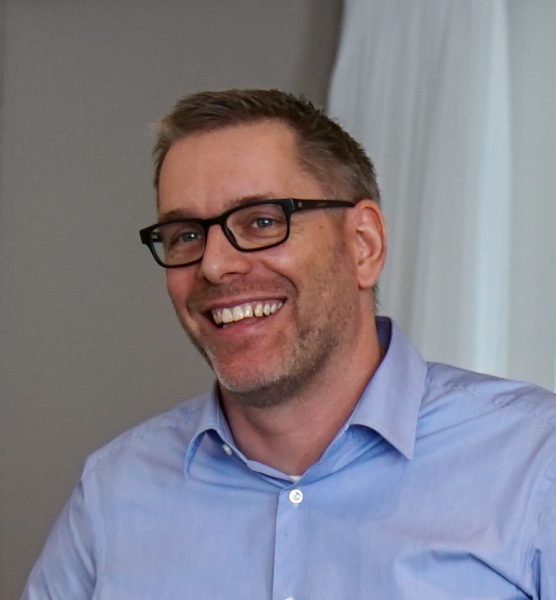 After graduating in physics at the Technical University of Munich, Christopher Broeg defended his PhD thesis in physics and astronomy in Jena. He started as a postdoc in Bern in 2007 working on models of giant planet formation. In 2012, after the selection of CHEOPS by ESA, he became the project manager for the consortium co-leading the mission with an ESA project manager. Christopher has also been involved in the design and construction of various elements of the ESPRESSO and NIRPS spectrographs.
After graduating in physics at the Technical University of Munich, Christopher Broeg defended his PhD thesis in physics and astronomy in Jena. He started as a postdoc in Bern in 2007 working on models of giant planet formation. In 2012, after the selection of CHEOPS by ESA, he became the project manager for the consortium co-leading the mission with an ESA project manager. Christopher has also been involved in the design and construction of various elements of the ESPRESSO and NIRPS spectrographs.
“The entire CHEOPS team in Switzerland and Spain made a remarkable effort during the pandemic”, explains Mathias Beck, who assures us that it is thanks to the high level of automation of CHEOPS operations at the SOC and MOC that there was no interruption of scientific observations. “However, what is missing the most,” concludes Nicolas Billot, “are meetings with colleagues and informal discussions that often lead to ideas and solutions that one would not necessarily have thought of alone in front of a screen”.
Categories: External Newsletter, News

